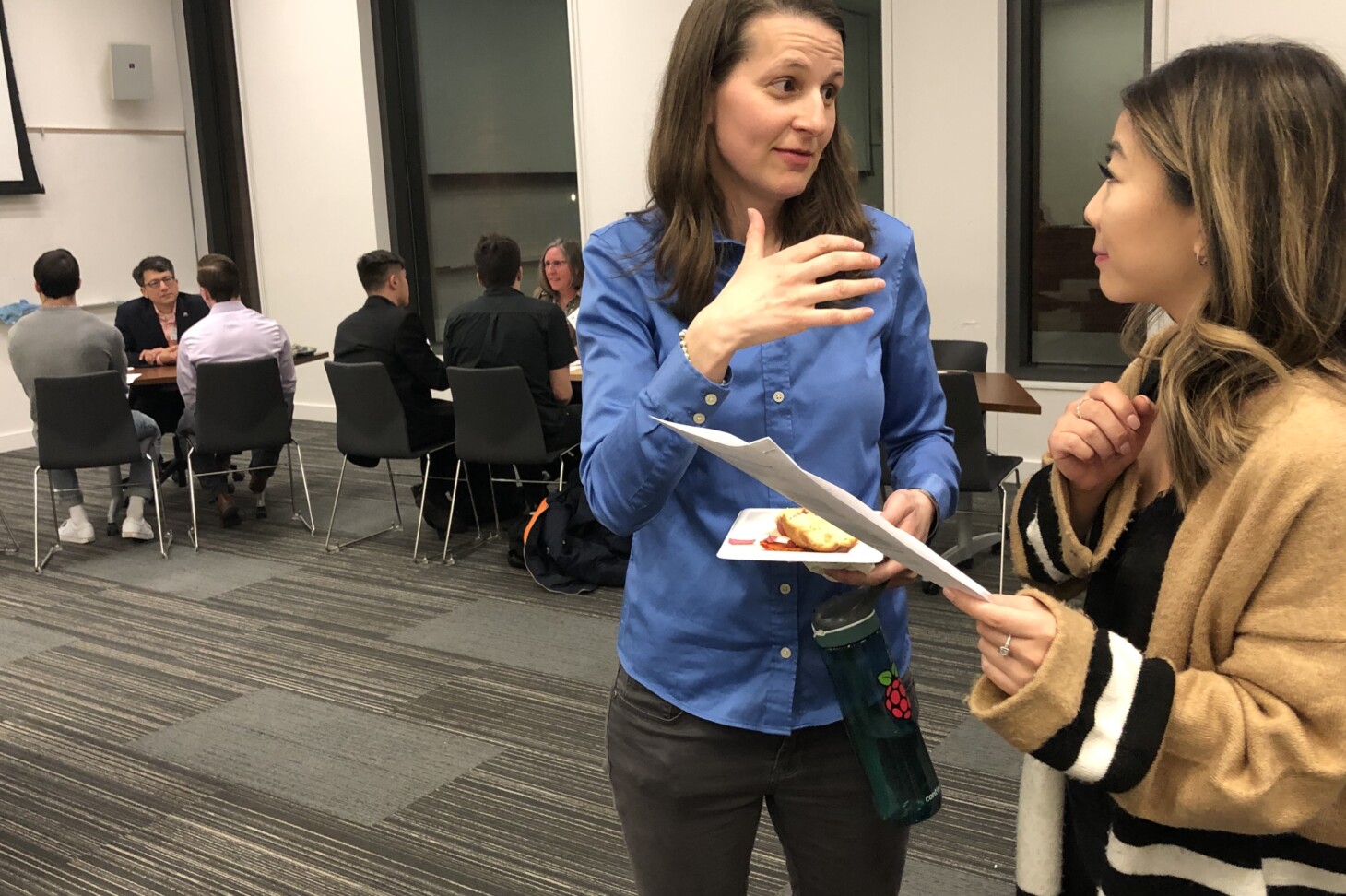News, articles, and interesting stuff from the College of Business
Setting our sights on zero: How we define future success
Many mainstream stories of entrepreneurial success feature people who have benefited from seeing role models who look and sound like themselves thriving as business owners. When I had a chance to build a team and launch a new entrepreneurship center at Oregon State University about five years ago, I set about charting a different course, using the framework of inclusive design.

by Audrey Iffert-Saleem, Ed.D. (she/her/hers), Director of InnovationX
I was frustrated – again. Sitting on a panel at an entrepreneurship conference several years back, the topic was ‘best practices’ in measuring entrepreneurship program performance. And again, there seemed to be limited real talk going on about historic shortcomings in how we define our success, or in looking ahead to how we might need to define it for the future.
Probably like many entrepreneurs, I had a chip on my shoulder. In the decade-plus that I’d been working in entrepreneurship in higher education, I consistently had been frustrated and wary with institutions’ claims of ‘funding secured,’ ‘successful exits’ or ‘jobs created’ – metrics that largely prioritized scaling up and attracting investment.
I was not alone in my doubt. I heard grumblings among colleagues at other universities about how potentially unreliable these proclamations could be: How does one define a job, anyway? What, exactly, is considered funding?
I felt determined to prove that there were other ways of doing things. That the magic number of what counted as ‘success’ was not some multi-digit dollar sign or dramatic percent increase. The number was actually zero.
Let me explain. Traditional metrics focus on the performance of the entrepreneurs – not on the performance of the programs designed to serve them. In that, they don’t capture what I find most compelling and powerful about entrepreneurship: the local economic opportunity it can provide to individuals, families, and entire communities – especially those who have been historically marginalized – if they have equal access to the resources and tools to create their own businesses.
Zero obstacles to exploring and testing business ideas. Zero gap between the opportunities available to every aspiring entrepreneur, no matter their background or history.
Audrey Iffert-Saleem
Many mainstream stories of entrepreneurial success feature people whose backgrounds are replete with opportunity, who have had access to social and financial capital and who have benefited from seeing role models who look and sound like themselves thriving as business owners. The fact that these entrepreneurs’ ideas gained traction is not necessarily a testament to the program that supported them – they had good chances of becoming successful, anyway. A clearer measure of success is whether the program can serve those who haven’t experienced such advantages, providing opportunity where historically it had not existed.
When I had a chance to build a team and launch a new entrepreneurship center at Oregon State University about five years ago, this is the measure of success that I embraced. I set about charting a different course, using the framework of inclusive design.
The inclusive design approach calls for 1) recognizing that exclusion is happening; 2) centering on the experiences of students who’ve been historically excluded from entrepreneurship programming; and 3) designing for historically excluded students and extending to all.
The basic idea is to focus our energy on engaging whomever we see to be farthest from their proverbial ‘seat at the table’. This requires a different approach to recruitment. It’s no longer good enough to state that a center’s programs are open to anyone, but then only promote those programs through tools like the existence of a website, word-of-mouth, or a homogenous network of people already ‘in the know’. Rather, we consider who we’re engaging and how we’re enticing them into the room, clearing obstacles from their path to help them get their seat at the table. We’re scaling entrepreneurship horizontally, not vertically.
A teammate of mine suggested that it’s clear that around here, we don’t care about moving up and to the right – our magic number is zero. Zero obstacles to exploring and testing business ideas. Zero gap between the opportunities available to every aspiring entrepreneur, no matter their background or history.
We already know from established research that business creation is good for the economy and that it promotes financial independence – it’s an especially important economic tool for women and communities of color. And a business doesn’t necessarily need to scale up or attract investors to achieve economic impact. (In fact, HBR just recently published a piece about the tremendous benefits of scaling deep, rather than scaling up.)
If we focus our metrics on zero – removing barriers and making entrepreneurship tools and resources accessible – we are opening ourselves to more opportunity for more people, rather than exceptional opportunity for a few people. We keep our focus on our how programs enable that process: the diversity of our participants in our programs, the equity of resources provided to those participants, and how much they feel like they belong in the spaces we’re creating with and for them. This is how we measure our success.
In the end, we’re allowing our entrepreneurs to define for themselves what ‘success’ means, whether it’s the jobs they’re creating, the revenue they’re earning or their years in business. But we no longer mistake the ‘success’ of an individual entrepreneur with our program’s overall ‘success’. And together, we are making an impact in our mission to create more sustainable economies for everyone in our communities.
This article was first published by the Deshpande Foundation, an organization supporting innovation and entrepreneurship in higher education.
InnovationX, our Center for Innovation and Entrepreneurship, is a training ground for turning our focus on problem-solving into results and sustainable businesses. While the center lives in our College of Business, InnovationX serves students of any major across OSU and promotes access to entrepreneurship programming for our communities.